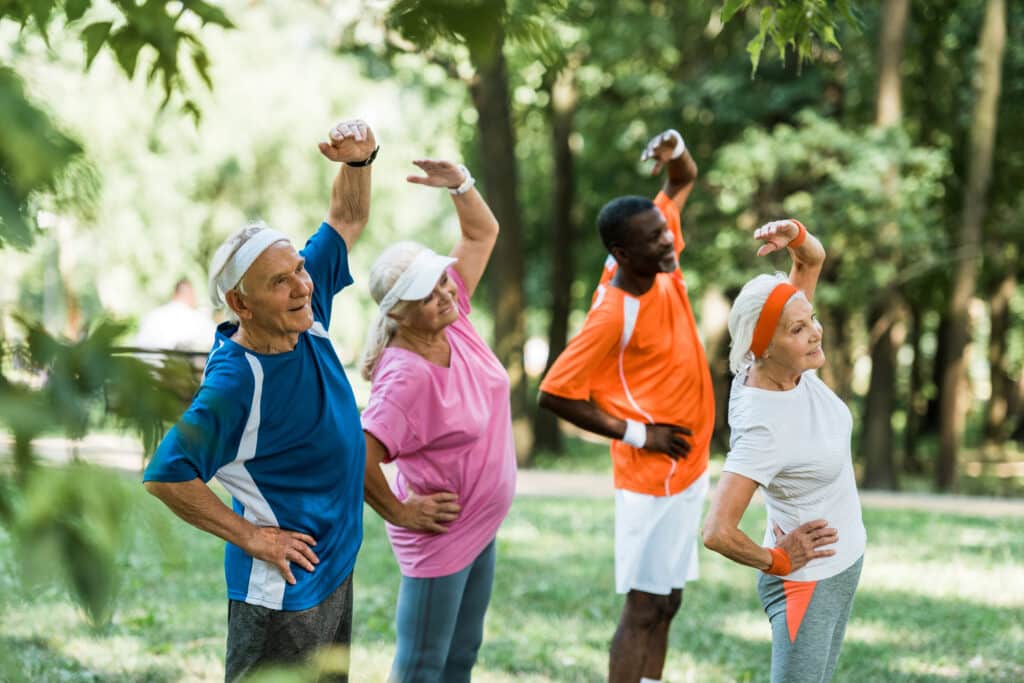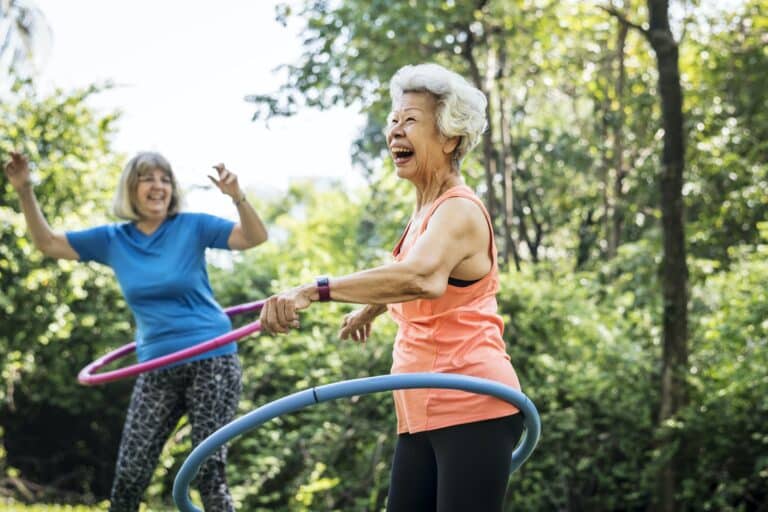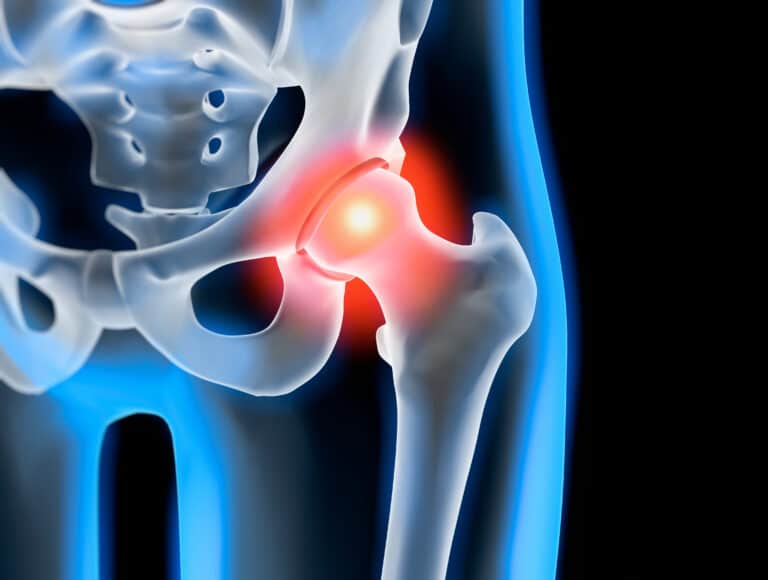If you need easily accessible and practical hip exercises, “fire hydrant” exercises may be a great option. Although simple, many older adults consider this exercise a big help in their wellness routine.
Of course, understanding why these exercises are helpful and knowing how to use them properly is essential for getting the results you want.
I’ve helped many older adults beat their hip pain and improve their joint health through physical therapy, and I’ve seen firsthand how helpful the right exercise can be for maintaining a good quality of life. Here, I will share some of the most essential information about fire hydrant exercises to help you feel more confident using them.
Let’s dive deeper into why these exercises deserve a spot in your daily routine.
Benefits of Fire Hydrant Exercises
In their simplest form, fire hydrant exercises require lifting your leg outward against gravity. You’ve probably seen a dog lifting its leg beside a fire hydrant. Picture that motion without the fire hydrant and with you in place of the dog!
That’s essentially what fire hydrant exercises are all about. Designed to strengthen your hip’s lateral (outer) muscles, they are a staple in many rehab and preventative exercise programs.
Why Focus on the Hips?

Your hips are central to almost every movement, whether picking something off the floor, walking in the park, or standing up from a chair. In short, these exercises help improve your hip mobility and strength, enhancing your overall endurance and stability.
One of the first things I tell my patients is that improving mobility and flexibility is not just about feeling better; it’s about living a fuller, more active life. Luckily, fire hydrant exercises can be a big help in enhancing hip mobility.
Here are a few reasons why they’re so beneficial, especially as we age:
- They can enhance mobility in your hip joints, making everyday movements smoother and less painful.
- They can strengthen your glutes, hip adductors, and core muscles. Stronger muscles mean better support for your entire body, improving endurance and reducing the risk of falls.
- They can help improve balance and stability. A strong base in your hips contributes to overall balance, making you more stable on your feet.
- Fire hydrant exercises are customizable for different ability levels, so whether in your physical prime or recovering from an injury, they’re adaptable and beneficial for all fitness levels.
The efficacy of fire hydrant exercises is more than just anecdotal. Studies have shown that exercises targeting the hip abductors and external rotators, like the fire hydrant, can significantly improve hip stability and reduce knee pain.1
These findings are particularly relevant for older adults, who are at a higher risk for falls and related injuries.
The National Strength and Conditioning Association endorses strength training exercises, including those targeting the hips, as essential for maintaining muscle mass and bone density, reducing the risk of chronic diseases, and improving mental health and cognitive function in older adults.2
When used as part of a well-balanced exercise routine, fire hydrant exercises can significantly improve physical health and confidence in daily life.
Performing Fire Hydrant Exercises
Although fire hydrant exercises are not especially complicated, they must still be done safely and correctly.
Here are a few helpful tips to get the basics right, ensuring you reap all the benefits without any potential risks.
Getting Started: The Basic Form
- Begin on all fours, ensuring your hands are directly under your shoulders and your knees under your hips.
- Keeping your knee bent at a 90-degree angle, lift one leg out to the side, keeping your pelvis stable and your back straight.
- Lift your leg as high as possible without tilting your hips or shoulders, then slowly lower it.
- Aim for 10-15 repetitions on each side, and remember, quality over quantity.
This exercise is a great starting point for many of the older adults I work with, offering a comfortable challenge. However, many modifications are available to meet your needs and keep things challenging.
Fire Hydrants With Resistance Bands
Placing a resistance band around your thighs can increase the challenge for your muscles. To do this, tie a loop with your resistance band or use a pre-looped band.
Variations for Different Fitness Levels
As you become more comfortable with the basic form, you should challenge yourself with new variations. Here are a few ways to mix up your fire hydrant.
Against a Wall
Positioning yourself against a wall is a great way to strengthen your hip at a specific range. For example, you could set yourself up close to the wall and get resistance at close range or move yourself out slightly and work at a wider range.
Many patients prefer to place a pillow between their knees and the wall for comfort.
Different Timing
No equipment? That’s fine, too! You can make fire hydrants more challenging by switching up your timing. For example, you can pause at the top, bring your leg down extra slowly, or pulse your leg in different positions.
Use a Bigger Range of Motion
If you’re comfortable with the fire hydrant movement, try hip ‘CARs.’ To do this motion, draw a circle in the air with your knee, using as much of your knee range of motion as possible. While fire hydrants only move in one direction, this will create a greater sense of mobility.
Advanced: Knees Lifted
If you’re ready to move on to a more difficult variation, try doing the fire hydrant movement with both knees hovering about an inch off the ground at the start position. You can also try this variation, and when it becomes too difficult, just set your knees down for the remainder of the set.
I recommend starting with the basic version of a fire hydrant and then experimenting with different options.
Find one or more challenging versions you like, try them for a few weeks, and see how your body responds.
Consistency is vital, and even the best exercises aren’t much help if you only do them once or twice. Try incorporating fire hydrant exercises into your routine up to every day, gradually increasing repetitions as your strength and flexibility improve.
A Few Tips on Maximizing Results
Like many other exercises, fire hydrant exercises can lead to discomfort or poor results if not done correctly. With that in mind, here are my top tips to ensure you’re getting the most out of your exercise session:
Common Mistakes and How to Avoid Them
- Engaging your core can help you avoid arching your back and keep your spine neutral. A neutral spine will help protect your lower back and limit compensation from other muscle groups.
- Keep your hips level to maximize glute engagement and prevent undue strain on your back. You can also set a small pillow on your lower back and keep it in place while exercising.
- Slow down your repetitions and focus on controlled movements to ensure you use the correct muscles and feel the work in the right places.
Tips for Better Results
- Be consistent and make these exercises a regular part of your routine, up to every day if you can.
- Focus on the mind-muscle connection to visualize the working body parts. Visualization can significantly improve muscle activation and effectiveness.
- Progress your fire hydrant exercises by gradually increasing the difficulty with more repetitions, sets, or resistance to continue challenging your muscles.
Like I always tell my patients: listen to your body. If the exercises become too easy or you’re no longer feeling challenged after several weeks, it’s time to step things up. However, always prioritize form over intensity to avoid injury.
Understanding the Impact of Fire Hydrant Exercises
It’s one thing to perform exercises; it’s another to understand their potential impact. Through my years of practice, I’ve witnessed numerous success stories that underscore the transformative power of regular, targeted exercises like fire hydrants.
When our hips move better, our body moves better. When your body moves better, you can spend more time doing what you love. Fire hydrant exercises might just be one piece of the puzzle, but they’re a great starting point for improving your health and wellness through a more active lifestyle.
Key Takeaways
As we’ve journeyed through the world of fire hydrant exercises together, it’s clear that the benefits are worth remembering. Here are some of the most critical takeaways from this article:
- Fire hydrant exercises can improve hip health. By incorporating them into your routine, you’re taking a proactive step toward improving your mobility, flexibility, and strength.
- Technique and consistency matter. Paying close attention to your form and consistency with your exercise will help you avoid common mistakes and reap maximum benefits.
- Fire hydrants are highly adaptable, so whether you’re just starting your fitness journey or looking to challenge yourself further, there are variations of these exercises to suit your needs.
- A good exercise program is vital. While fire hydrant exercises offer significant benefits, they should be integrated into a broader exercise routine that addresses all aspects of your physical fitness.
References
- Lanza MB, Arbuco B, Ryan AS, Shipper AG, Gray VL, Addison O. Systematic Review of the Importance of Hip Muscle Strength, Activation, and Structure in Balance and Mobility Tasks. Arch Phys Med Rehabil. 2022 Aug;103(8):1651-1662. doi: 10.1016/j.apmr.2021.12.008. Epub 2022 Jan 5. PMID: 34998714; PMCID: PMC10089299.
- Fragala MS, Cadore EL, Dorgo S, Izquierdo M, Kraemer WJ, Peterson MD, Ryan ED. Resistance Training for Older Adults: Position Statement From the National Strength and Conditioning Association. J Strength Cond Res. 2019 Aug;33(8):2019-2052. doi: 10.1519/JSC.0000000000003230. PMID: 31343601.





